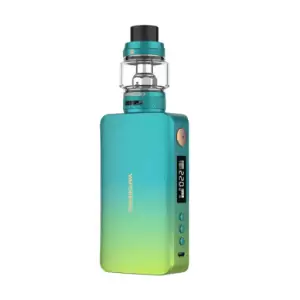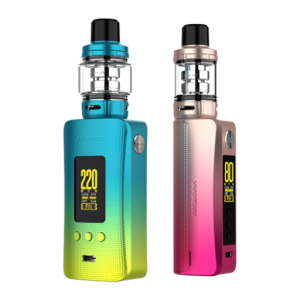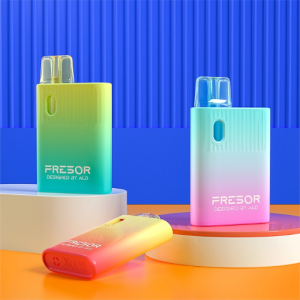The rising popularity of disposable vapes worldwide marks a significant trend in both the tobacco industry and among consumers seeking alternatives to traditional smoking. As these devices become increasingly favored for their convenience, variety of flavors, and perceived lesser health risks, the global landscape of vaping regulations has come into sharp focus. For travelers, particularly those who vape, navigating this landscape becomes a crucial aspect of planning and undertaking international journeys.
The importance of understanding local vaping laws cannot be overstated. With countries adopting a wide range of regulatory stances—from stringent bans to regulated acceptance—the legal environment for disposable vapes varies dramatically across borders. This variance poses a challenge for travelers, who must ensure their vaping practices comply with the laws of their destination countries to avoid penalties, confiscation of devices, or even legal repercussions.
As disposable vapes continue to intertwine with the fabric of global travel, the need for awareness and understanding of local vaping regulations becomes increasingly paramount. This introduction serves as the gateway to exploring the intricate mosaic of vaping laws worldwide, offering insights into how different regions address the challenges and opportunities presented by disposable vapes.

nderstanding the Basics: What Are Disposable Vapes?
Disposable vapes have emerged as a popular choice among vapers for their convenience and ease of use. Distinguished from other vaping devices by their use-and-throw nature, these gadgets come pre-filled with e-liquid and are designed to be discarded once the e-liquid is depleted or the battery dies. This design eliminates the need for refilling or recharging, offering a straightforward vaping experience particularly appealing to travelers and those new to vaping.
How Disposable Vapes Differ from Other Vaping Devices
Unlike rechargeable vaping devices, which can be used repeatedly with regular maintenance and refilling, disposable vapes are designed for a single use. They typically do not feature replaceable parts, adjustable settings, or the need for ongoing upkeep. This simplicity makes disposable vapes an attractive option for individuals seeking a hassle-free alternative to smoking, as well as for seasoned vapers in search of a lightweight, travel-friendly option.
Why Some Destinations Regulate Them Differently
The regulation of disposable vapes varies significantly across different destinations due to several factors:
- Public Health Concerns: Some regions impose stricter regulations on disposable vapes due to concerns about health risks associated with vaping, including potential impacts on lung health and nicotine addiction.
- Youth Appeal: Flavored disposable vapes have come under scrutiny for their appeal to minors, prompting some countries to regulate or ban flavored products to protect young populations.
- Environmental Considerations: The single-use nature of disposable vapes raises environmental concerns, leading some jurisdictions to regulate their disposal or limit their sale to reduce waste.
- Cultural and Social Norms: Attitudes towards smoking and vaping vary widely across cultures, influencing how different societies regulate disposable vapes.
Understanding the distinctions between disposable vapes and other vaping devices, as well as the reasons behind varied regulatory approaches, is crucial for travelers. Being informed about destination-specific regulations helps ensure compliance with local laws, avoiding fines or other penalties while respecting public health and safety norms abroad.
North America: A Patchwork of Policies
In North America, the regulatory landscape for disposable vapes is characterized by a diverse patchwork of policies that reflect the continent’s varied approaches to vaping. The United States and Canada, in particular, showcase how differing public health perspectives, legal frameworks, and cultural attitudes can influence vaping regulations at both federal and state or provincial levels.
United States: Federal Oversight and State-Specific Laws
In the United States, the Food and Drug Administration (FDA) provides federal oversight for disposable vapes, focusing on public health implications and aiming to prevent youth access. Key federal regulations include age restrictions and marketing guidelines. However, the intricacies of vaping laws are further compounded by state-specific regulations, which can vary dramatically:
- Flavor Bans: Some states, such as Massachusetts and California, have implemented bans on flavored disposable vapes to curb their appeal to minors.
- Usage Restrictions: Various states have also enacted laws governing where disposable vapes can be used, with some extending smoking bans to include vaping in public spaces.
- Sales and Taxation: The sale of disposable vapes is subject to state-level taxation and regulatory policies, leading to a diverse marketplace across the country.
Canada: Federal Guidelines with Provincial Nuances
Canada’s approach to regulating disposable vapes is managed through a combination of federal guidelines and provincial regulations. Health Canada oversees the federal regulatory framework, emphasizing product safety, nicotine content limits, and packaging requirements to protect consumers and reduce youth vaping. Provincial variations include:
- Sales Restrictions: Provinces have the authority to impose additional restrictions on the sale and display of vaping products, including disposable vapes.
- Public Use: Regulations on vaping in public places can vary by province, with some regions including vaping under broader smoking bans.
Highlighting States and Provinces with Strict Bans vs. More Lenient Allowances
The regulatory environment in North America means that travelers must be vigilant and informed about the specific laws governing disposable vapes in their destination. For instance, while traveling in the U.S., navigating from a state with lenient vaping laws to one with strict flavor bans requires an awareness of these legal disparities to ensure compliance. Similarly, in Canada, understanding the provincial nuances of vaping regulations is essential for anyone looking to use disposable vapes while visiting.
The patchwork of policies governing disposable vapes in North America underscores the importance of researching and adhering to local laws. For travelers and residents alike, staying informed about these regulations is crucial for navigating the complex legal landscape surrounding vaping, ensuring a lawful and respectful vaping experience.
Europe: Navigating the Tobacco Products Directive (TPD)
In Europe, the regulatory framework for disposable vapes is largely shaped by the Tobacco Products Directive (TPD), a piece of legislation enacted by the European Union to standardize the rules surrounding the manufacture, presentation, and sale of tobacco and vaping products across its member states. This directive aims to ensure a high level of health protection for European citizens while accommodating the internal market’s functioning.
How the TPD Affects the Use and Sale of Disposable Vapes Across the EU
The TPD introduces several key provisions that directly impact disposable vapes:
- Nicotine Strength and Volume Limits: To mitigate the risk of high nicotine intake, the TPD caps the nicotine concentration at 20 mg/mL and restricts the volume of e-liquid in any single disposable vape to 10 mL.
- Health Warnings and Packaging Requirements: Packaging for disposable vapes must include health warnings covering a significant portion of the surface area. Additionally, these products must be child-resistant and tamper-evident.
- Ingredient Disclosure and Quality Standards: Manufacturers are required to disclose all ingredients contained in disposable vapes and comply with specific quality standards to ensure consumer safety.
Specific European Countries with Notable Restrictions or Allowances for Vaping
Within the TPD’s framework, individual EU countries have the latitude to enforce additional restrictions based on their public health policies:
- Flavor Bans in Certain Countries: Nations like Finland and Hungary have imposed restrictions on the sale of flavored disposable vapes to limit their appeal to younger demographics.
- Public Use Regulations: Some EU member states have included vaping in their public smoking bans, significantly restricting where disposable vapes can be used, such as in public buildings, restaurants, and bars.
Navigating Vaping Laws in the European Union
For travelers within the EU, understanding the nuances of the TPD and national regulations is crucial for a seamless experience:
- Research Destination-Specific Regulations: Before traveling, it’s important to research the vaping laws of the destination country, as these can vary significantly within the TPD framework.
- Pack Accordingly: Ensure that any disposable vapes brought into the EU comply with the TPD regulations, particularly concerning nicotine concentration and packaging.
- Respect Public Space Restrictions: Be mindful of and comply with regulations regarding vaping in public spaces, which can vary widely across the EU.
Navigating the TPD and individual country regulations requires vigilance and preparation from travelers wishing to use disposable vapes within the European Union. By staying informed and respectful of these laws, vapers can ensure their actions are both lawful and considerate of public health standards and local customs.

Oceania: Australia’s Unique Stance and New Zealand’s Openness
In Oceania, Australia and New Zealand provide contrasting case studies in the regulation of disposable vapes, reflecting different public health strategies and attitudes towards vaping as a harm reduction tool.
Australia’s Prescription Model for Nicotine Disposable Vapes
Australia has taken a notably cautious approach to nicotine vaping products, including disposable vapes. The country’s unique stance involves:
- Prescription Requirement: Individuals seeking to use nicotine-containing disposable vapes must obtain a prescription from a healthcare provider. This measure aims to regulate access to nicotine vapes, treating them more as a cessation aid than a consumer product.
- Impact on Travelers: For travelers, this means that bringing nicotine disposable vapes into Australia without a prescription could lead to complications at customs. It’s crucial for visitors to be aware of these regulations to avoid legal issues.
New Zealand’s Progressive Approach to Vaping
Contrastingly, New Zealand adopts a more liberal stance toward disposable vapes, recognizing them as a potential tool for reducing smoking rates:
- Regulated Access: In New Zealand, disposable vapes are available for sale to adults, with regulations in place to ensure product safety and restrict marketing practices that appeal to minors.
- Support for Smoking Cessation: The government actively promotes vaping as a less harmful alternative to smoking, backed by public health campaigns and accessible information for smokers looking to switch to vaping.
Navigating Vaping Laws in Australia and New Zealand
For those traveling between or within Australia and New Zealand, understanding the distinct regulatory environments is essential:
- Check Legal Requirements: Travelers should verify the legal requirements for carrying disposable vapes, especially those containing nicotine, into each country. This includes understanding prescription requirements in Australia and compliance with New Zealand’s regulations.
- Be Mindful of Local Restrictions: Both countries may have specific rules regarding where vaping is permitted, such as in public spaces or near schools. Adhering to these restrictions is important for respectful vaping practices.
- Stay Informed: Regulations can change, and staying updated on the latest laws will ensure a smooth travel experience for vapers.
The approaches of Australia and New Zealand to disposable vapes illustrate the broader debate on vaping regulation and harm reduction. By staying informed about these differences, travelers can navigate the regulations effectively, ensuring they comply with local laws while respecting public health objectives in both countries.
Africa, with its diverse cultures and regulatory environments, presents an emerging market for disposable vapes characterized by varied regulations across the continent. From strict controls in some nations to more open stances in others, understanding the landscape of vaping laws is crucial for those looking to navigate this vast market.
Overview of African Nations with Specific Laws Regarding Disposable Vapes
The regulatory stance on disposable vapes across African countries varies significantly, reflecting differences in public health policies, legal systems, and cultural attitudes towards smoking and vaping:
- South Africa: One of the more vape-friendly countries on the continent, South Africa has established a legal framework for the sale and use of disposable vapes, focusing on product quality and restricting sales to minors.
- Egypt: Egypt allows the sale of disposable vapes, with a growing market presence in urban areas. However, regulations are evolving, and there’s a focus on preventing underage vaping.
- Kenya: Kenya has implemented regulations governing the vaping industry, including disposable vapes, aiming to balance public health concerns with consumer access to vaping products.
The Evolving Landscape of Vaping Acceptance and Regulation on the Continent
The approach to disposable vapes in Africa is in flux, with ongoing debates about their role in harm reduction and public health:
- Regulatory Developments: Some countries are in the process of developing or refining their regulations concerning vaping, which could lead to changes in how disposable vapes are marketed, sold, and used.
- Public Health Initiatives: There’s a growing interest in exploring vaping as an alternative to smoking, with some public health advocates in Africa considering the potential benefits of disposable vapes for adult smokers looking to quit.
Navigating Vaping Laws in Africa
For travelers and businesses operating in Africa, a careful approach to navigating the continent’s vaping regulations is essential:
- Research is Key: Given the diversity of regulations, conducting thorough research on the vaping laws of specific African countries before visiting or marketing products is crucial.
- Stay Adaptable: Be prepared to adapt to changes in regulations, as many African countries are still in the process of defining their stance on vaping.
- Respect Local Norms: Beyond legal requirements, respecting local cultural attitudes towards vaping can help ensure respectful and successful interactions within different African markets.
The landscape of disposable vape regulations in Africa reflects the continent’s dynamic and evolving approach to vaping. As Africa continues to develop its regulatory framework for vaping products, staying informed and respectful of both the laws and cultural nuances will be key for anyone looking to explore or expand into this emerging market.
South America: Developing Vaping Regulations
In South America, the approach to regulating disposable vapes is as diverse as its cultures, with countries adopting various stances ranging from openness to strict regulation. This diversity reflects the ongoing global debate over vaping and its implications for public health, commerce, and consumer behavior.
Status of Vaping and Disposable Vape Allowances or Bans in South American Countries
The regulatory environment for disposable vapes in South America showcases a spectrum of policies:
- Brazil: Brazil maintains a strict stance on vaping, with a comprehensive ban on the sale, advertising, and importation of disposable vapes. This prohibition reflects concerns about health risks associated with vaping.
- Argentina: Similar to Brazil, Argentina enforces stringent regulations against the sale and promotion of disposable vapes, aimed at curbing the proliferation of vaping among its population.
- Uruguay: Uruguay, known for its rigorous tobacco control measures, extends its strict regulations to include disposable vapes, prohibiting their sale and distribution.
- Chile and Colombia: These countries have taken steps towards regulating disposable vapes, focusing on restricting access to minors and ensuring product safety, though specific laws and enforcement can vary.
How Regulatory Environments are Shaping Up in Response to Vaping’s Popularity
The response to the rising popularity of disposable vapes in South America is indicative of broader public health priorities and concerns:
- Health Concerns: Many South American countries prioritize the prevention of potential health risks associated with vaping, particularly among youth, leading to restrictive policies.
- Regulatory Evolution: As the global understanding of vaping’s health implications continues to evolve, so too do the regulations in South American countries. Some nations are beginning to consider more nuanced regulatory frameworks that balance harm reduction with public health protection.
Navigating Vaping Laws in South America
For individuals and businesses engaging with disposable vapes in South America, navigating the legal landscape requires diligence and respect for local regulations:
- Stay Informed: Given the rapidly changing regulatory environment, staying updated on the latest laws and policies in each country is crucial.
- Understand Local Context: Awareness of the specific cultural and social context surrounding vaping in each South American country can guide more respectful and compliant practices.
- Adapt and Comply: For businesses, adapting marketing and sales strategies to comply with local regulations is essential for legal operation. For travelers, understanding and adhering to local vaping laws is necessary to avoid legal issues.
The developing regulatory landscape for disposable vapes in South America reflects the region’s cautious approach to vaping, with a strong emphasis on public health. As the conversation around vaping continues globally, the policies in South American countries may further evolve, underscoring the importance of staying informed and engaged with the local regulatory context.

Conclusion: Vaping Responsibly While Exploring the World
The journey through the global landscape of vaping regulations, from the patchwork policies of North America to the stringent bans in parts of South America, and from Europe’s harmonized Tobacco Products Directive (TPD) to the diverse approaches in Oceania and Africa, underscores a vital point for travelers: the paramount importance of being aware of and compliant with local vaping laws.
Recap of the Importance of Being Aware of Vaping Regulations in Global Destinations
Travelers who vape must navigate a complex web of regulations that vary significantly from one destination to another. These laws are shaped by public health concerns, cultural attitudes towards smoking and vaping, and differing views on harm reduction strategies. Understanding these regulations is not just about legal compliance; it’s also about respecting the health and well-being of the communities travelers visit.
Encouraging Responsible and Informed Vaping Practices Among Travelers
For individuals looking to explore the world with their disposable vapes, responsible vaping practices include:
- Thorough Research: Before embarking on international travel, researching the vaping regulations of the destination country is essential. This research should include not only the legality of vaping but also where vaping is permitted, whether disposable vapes are allowed in carry-on luggage, and any restrictions on flavors or nicotine content.
- Cultural Sensitivity: Vaping in public, especially in countries with strict bans or where vaping might be culturally frowned upon, requires sensitivity and discretion. When in doubt, it’s best to err on the side of caution and not vape in public spaces.
- Adaptability: Travelers should be prepared to adapt their vaping habits to comply with local laws and regulations. This might mean leaving disposable vapes at home when visiting countries with stringent bans or seeking out designated vaping areas in more permissive destinations.
Final Thoughts
As the global dialogue on vaping continues to evolve, so too will the regulations governing the use of disposable vapes around the world. For the vaping traveler, staying informed, respectful, and adaptable is the best strategy for navigating the diverse and changing landscape of international vaping laws. By doing so, vapers can ensure that their enjoyment of disposable vapes does not come at the expense of legal compliance or cultural respect, contributing to a responsible global vaping community.






